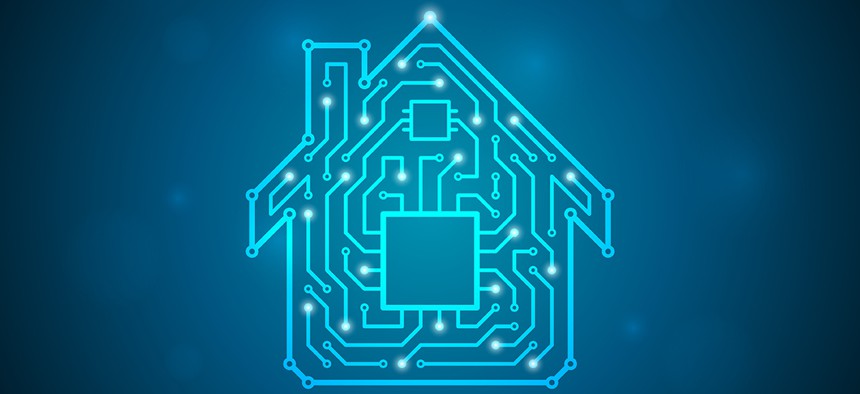We May Finally Make Our Homes Smart by Listening to the Flow of Their Electricity

3d_kot/Shutterstock.com
Every appliance speaks a secret language. Now we know what they’re saying.
Every appliance speaks a secret language. Now we know what they’re saying.
Technology to achieve a smart home by passively listening to electricity consumption patterns of a home has been proposed for years. Appliances speak in the spikes and dips of the electrons that race through their machinery. The distinct signature created by transistors, motors and heating elements may finally make the idea of a “smart home,” long hampered by incompatible and expensive devices, a reality.
The approach, known as nonintrusive load monitoring, has not gone far beyond the lab. But new machine learning algorithms that identify the power consumption of single devices by analyzing an entire house’s electricity profile are finally starting to hit the market. One startup, Sense, has bet that this approach will deliver basic intelligence to homes long before most appliances ever earn the “smart” appellation.
Sense sells homeowners a $249 box the size of a remote control to install in their home’s electrical breaker box. By measuring the electricity pattern about a million times per second, Sense can identify each device’s “fingerprint” and display the data on the user’s smartphone.
The Sense team (many of whom have worked on speech recognition) says that lets them turn energy information into home intelligence and get real-time insights on individual devices and appliances. The data goes far more than energy use: it can tell when a kid gets home from school, monitor time spent watching TV, and notify users when their clothes are done drying.
Home intelligence could unlock significant residential energy savings, say researchers, by informing users about their habits and providing insight about how individual appliances perform, energy-wise, over time.
Yet Sense’s ultimate customer may not be homeowners or landlords. The ability to monitor, and later manage, home energy use could prove invaluable to utilities—particularly, the power companies eager to extend the smart grid into homes. Smart grid technologies detect and react to local changes using wireless communication, machine learning, and automation. They’ve been shown to increase renewable energy, support more electric vehicles, better prevent tampering with the power system, and cut overall consumption. A power grid in which homes have the same sophisticated energy management technology as factories could smooth peak loads, and help utilities avoid having to build more power plants.


